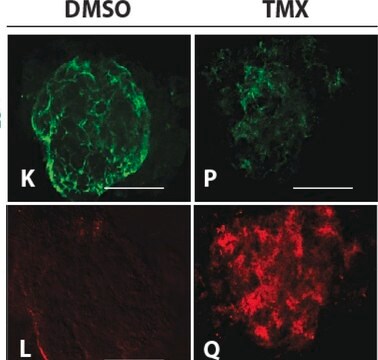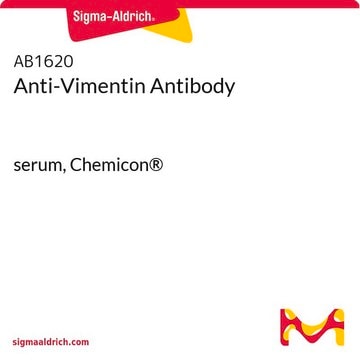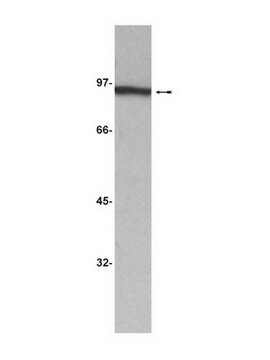MAB3400
Anti-Vimentin Antibody, clone V9
clone V9, Chemicon®, from mouse
Synonyme(s) :
Vimentin antibody
About This Item
Produits recommandés
Source biologique
mouse
Niveau de qualité
Forme d'anticorps
purified antibody
Type de produit anticorps
primary antibodies
Clone
V9, monoclonal
Espèces réactives
monkey, feline, pig, bovine, rat, human, chicken, canine
Ne doit pas réagir avec
mouse
Fabricant/nom de marque
Chemicon®
Technique(s)
immunocytochemistry: suitable
immunohistochemistry (formalin-fixed, paraffin-embedded sections): suitable
western blot: suitable
Isotype
IgG1
Numéro d'accès NCBI
Numéro d'accès UniProt
Conditions d'expédition
wet ice
Modification post-traductionnelle de la cible
unmodified
Informations sur le gène
human ... VIM(7431)
Description générale
Spécificité
Immunogène
Application
A dilution of 1:1000 was used in a previous lot.
Immunohistochemistry:
5-10 μg/mL was used on a previous lot; can be used on formalin fixed paraffin embedded tissues with traditional high temperature, citrate buffer treatments. Prolonged formalin fixation can reduce antivbody reactivity.
Immunocytochemistry:
5-10 μg/mL of a previous lot was used in IC.
Optimal working dilutions must be determined by end user.
Qualité
Western Blot:
1:1000 dilution of this antibody detected VIMENTIN on 10 μg of HeLa lysates
Description de la cible
Liaison
Forme physique
Autres remarques
Informations légales
Not finding the right product?
Try our Outil de sélection de produits.
En option
Code de la classe de stockage
10 - Combustible liquids
Classe de danger pour l'eau (WGK)
WGK 2
Certificats d'analyse (COA)
Recherchez un Certificats d'analyse (COA) en saisissant le numéro de lot du produit. Les numéros de lot figurent sur l'étiquette du produit après les mots "Lot" ou "Batch".
Déjà en possession de ce produit ?
Retrouvez la documentation relative aux produits que vous avez récemment achetés dans la Bibliothèque de documents.
Protocoles
How to stain organoids? A complete step-by-step protocol for immunofluorescent (IF) and immunocytochemical (ICC) staining of organoid cultures using antibodies
Notre équipe de scientifiques dispose d'une expérience dans tous les secteurs de la recherche, notamment en sciences de la vie, science des matériaux, synthèse chimique, chromatographie, analyse et dans de nombreux autres domaines..
Contacter notre Service technique








